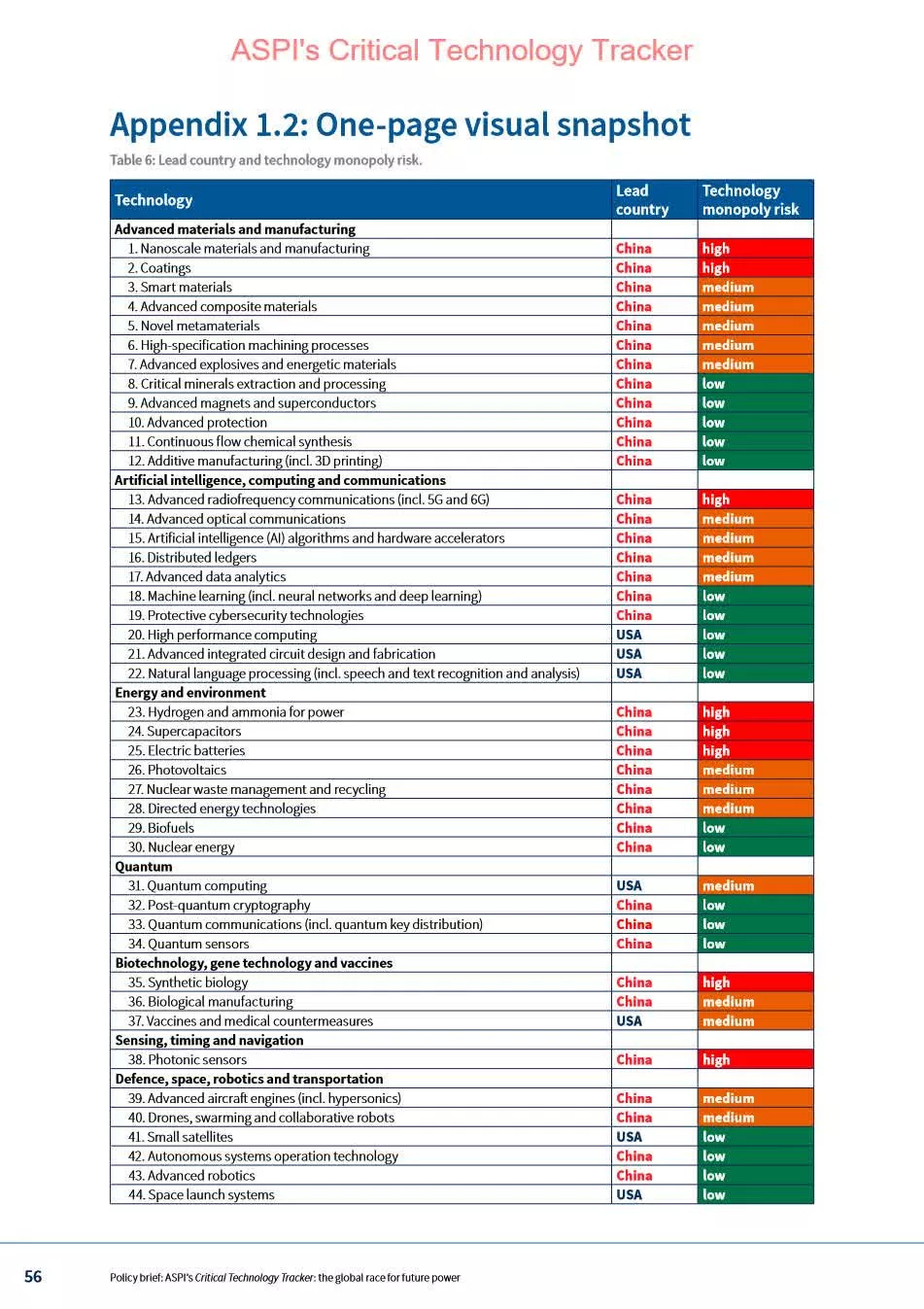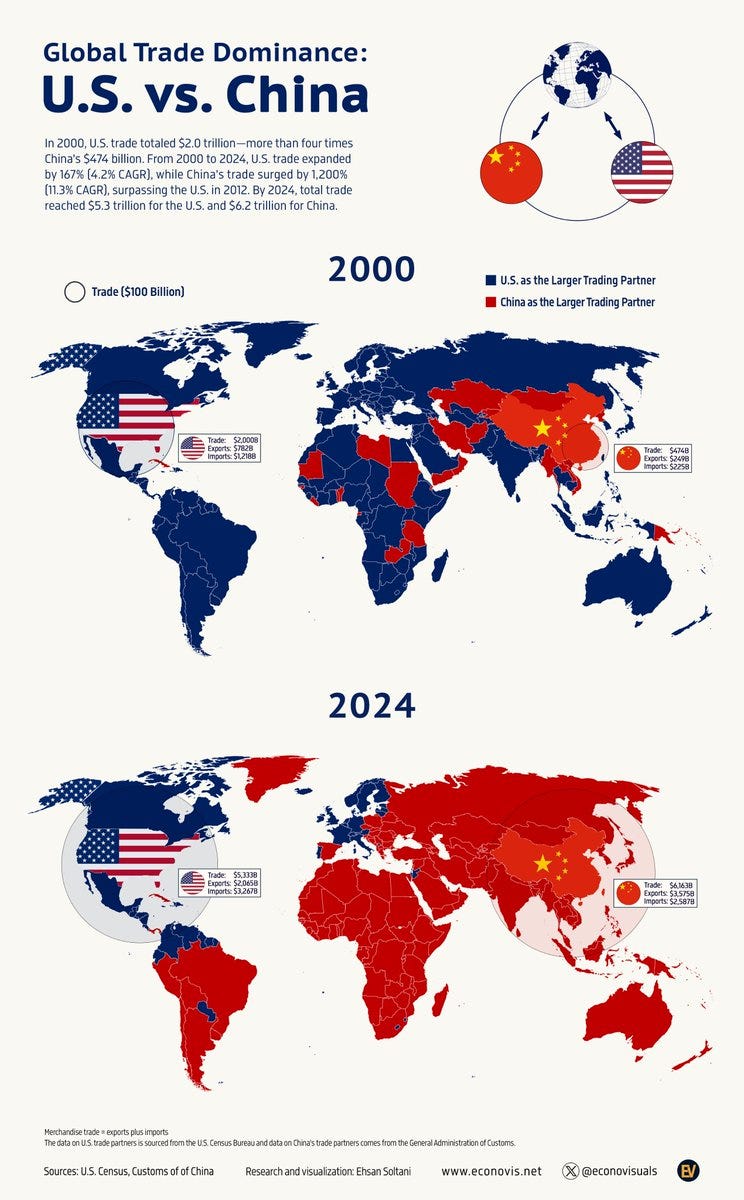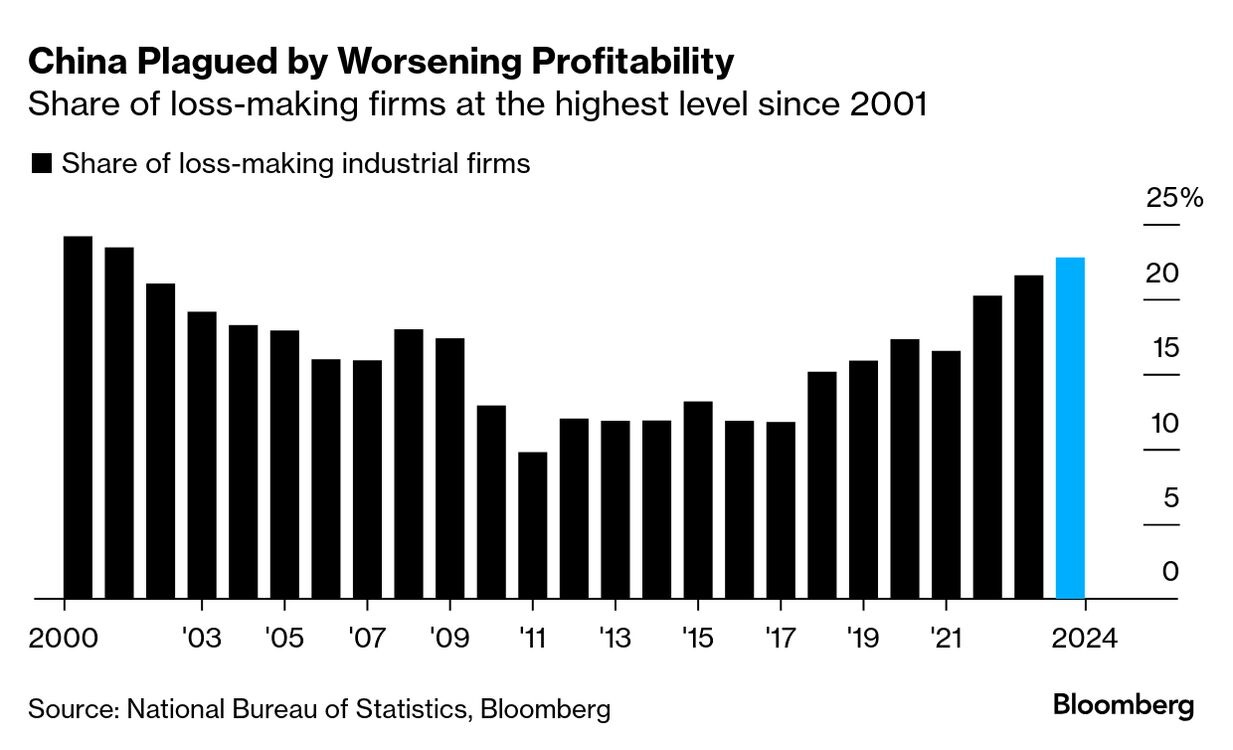Six-Chart Sunday – The Two Chinas
6 Infographics + 1 Video (Axios' Alex Thompson, author of “Original Sin”)
Is China a surging power whose global dominance in the 21st century is all but assured? Or is it a failing power facing insurmountable challenges and future decline? Few questions portend greater economic, geopolitical or military significance. There are good arguments (and data & charts) for both propositions. The answer appears to be “yes.”
THE RISING CHINA
China has become the world’s factory floor, displacing the U.S. as leading global manufacturer. “China not only has more factories, it is also modernizing them faster, with technologies such as 5G private networks for automation. That means it can more quickly and efficiently link manufacturing equipment to designers and users, updating products at speeds that traditional manufacturing can’t achieve.” (WSJ)
China is an increasingly-dominant global innovator. “China is reaping the results of a relentless effort to overtake the U.S. at the cutting edge of engineering, science & technology… The Australian Strategic Policy Institute puts Chinese researchers ahead of Americans in 37 of 44 technologies examined, across the sectors of defense, space, robotics, energy, environment, biotechnology, artificial intelligence, advanced materials and quantum technology.” (WSJ)
China is the leading trading partner with more nations than any other (chart). A decade of intentional focus on dominating critical technologies & supply chains (via subsidies for domestic champions, non-tariff barriers, massive investments in research, forced tech transfer - the Made in China 2025 initiative) has positioned China as an essential trading partner with increasingly low costs, improving quality and a strategic stranglehold on critical inputs (such as rare Earth magnets).
THE FAILING CHINA
China’s economy is weak & weakening. Faced with the “most loss-making industrial companies since 2001… local Chinese leaders laden in debt are rolling out tax breaks and subsidies for companies, in a bid to stave off the double whammy of job and revenue losses.”
China faces a dismal demographic picture. The “One Child Policy” was a disaster. Not only does China presently face “the world’s most skewed sex ratio at birth at around 110 males born for every 100 females as of 2023,” but “the 1.73% average annual decline in China’s working-age population is likely to lead to lower economic growth unless productivity rises rapidly.”
China is dealing with massive investment bubbles. For years the Chinese economy inflated an epic real estate bubble, with over-building leading to “ghost cities,” and “as many as 90 million empty housing units.” The “resulting crash in the market led to the destruction of $18 trillion of household wealth” due to falling house prices (chart below) and anemic domestic demand. China “replaced [that] incredibly harmful housing bubble with an equally harmful factory bubble,” and is now “unleashing a new export shock on the world” that is likely to expand support for tariffs and protection against Chinese exports (NYT).
VIDEO
Award-winning White House correspondent Alex Thompson discussed his #1 NYT bestseller “Original Sin” with me this week. An extraordinary story that continues.








As usual, great column. And what an interview!
Chart #2 was the scariest of all. We in the US have always thought our innovation far outstrips the rest of the world. Apparently, that is no longer true. However, as the charts 4-6 show, China has some self-created deep problems that will take their toll over the next decade. What should worry all of us is that China may be near its apex, and may want to assert itself in Taiwan and the rest of the South China Sea in the near future.